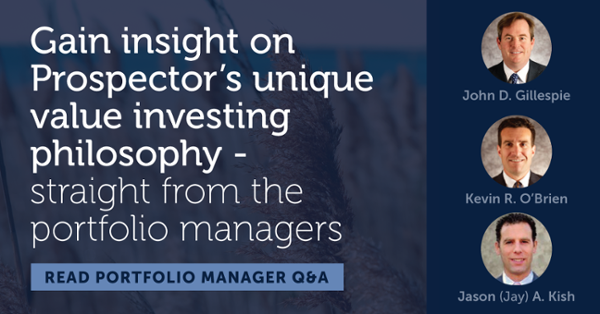As the calendar flips to 2022, we wanted to offer a quick look back at some of our most popular blogs from the prior year. They cover issues that are still salient today. Below you’ll find prior blogs on the emergence of meme stocks, the unusual dominance by large cap stocks, and the story of our own Steve Labbe, and his path to value investing.
We appreciate your readership and interest in Prospector Partners, and as we head into the new year, we’d like to hear from you. Let us know if there is a specific topic you’d like us to cover in 2022, or fill out our contact page and we’ll be in touch.
All the best,
The Prospector Partners team
[PODCAST] The Path to Value Investing with PM Steve Labbe
After graduating with a degree in mathematics and pursuing a job as a teacher, Steve Labbe could have never predicted he would spend the next 16 years working for a sell-side research firm and eventually become a portfolio manager at Prospector Partners. Like many people, his non-traditional journey led him to accumulate experiences that ultimately made him a terrific fit on his current team. Having been an analyst covering the insurance industry during catastrophes such as 9/11, Hurricane Katrina and the COVID-19 pandemic, his unique perspective is an invaluable piece of Prospector’s research efforts.
Reddit Traders and Things That Remind Us of the Dot-Com Bubble
If you were working in the investment industry during the late 1990s, what were some of the most excessive, unreasonable market events you remember? Here are some that may jog your memory: Mark Cuban’s Broadcast.com (known as AudioNet prior to the name change), which primarily streamed professional sports games via the internet, IPO’d in 1998 and saw its stock soar 250% in its first trading session, leaving the company with a value of roughly $1 billion. In April 1999 – just nine months later – Yahoo! acquired the company for $5.7 billion and later shuttered its services in 2002.
Charts of the Month: Perspective on the Large Cap Rotation
Small cap stocks enjoyed a brief leadership position over large caps as the U.S. emerged from the recession, but the rotation has been short lived. Large caps have come into favor again, resuming a run of dominance that was in place before the pandemic. A couple of charts below show how unusual the run by large caps has been, and what that means for relative valuations. The first chart displays performance of large caps (as demonstrated by the S&P 500) relative to small caps (the S&P Small Cap 600).


